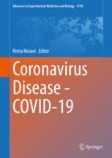Search
Search Results
-
The polymorphism T1470A of the SLC16A1 gene is associated with the lactate and ventilatory thresholds but not with fat oxidation capacity in young men
PurposeTo examine the association of the single nucleotide polymorphism A1470T in the SLC16A1 gene with blood lactate accumulation during a graded...

-
Hypoxic-induced resting ventilatory and circulatory responses under multistep hypoxia is related to decline in peak aerobic capacity in hypoxia
BackgroundSeveral factors have been shown to contribute to hypoxic-induced declined in aerobic capacity. In the present study, we investigated the...

-
Ventilatory Effects of Acute Intermittent Hypoxia in Conscious Dystrophic Mice
Exposure to acute intermittent hypoxia (AIH) elicits a form of respiratory plasticity known as long-term facilitation (LTF). Interest has grown in...
-
Evidence of ventilatory constraints during exercise in hypermobile Ehlers–Danlos syndrome
PurposeHypermobile Ehlers–Danlos syndrome (hEDS) is a connective tissue disorder with many different symptoms such as pain, fatigue, dysautonomia, or...

-
SubSol-HIe is an AMPK-dependent hypoxia-responsive subnucleus of the nucleus tractus solitarius that coordinates the hypoxic ventilatory response and protects against apnoea in mice
Functional magnetic resonance imaging (fMRI) suggests that the hypoxic ventilatory response is facilitated by the AMP-activated protein kinase...

-
AMPK facilitates the hypoxic ventilatory response through non-adrenergic mechanisms at the brainstem
We recently demonstrated that the hypoxic ventilatory response (HVR) is facilitated by the AMP-activated protein kinase (AMPK) in catecholaminergic...

-
Pulmonary rehabilitation improves exercise capacity, health-related quality of life, and cardiopulmonary function in patients with non-small cell lung cancer
BackgroundLung cancer significantly impairs exercise capacity and health-related quality of life (HRQL). Pulmonary rehabilitation (PR) has...
-
Association between ventilatory efficiency, oxygen uptake, and Glittre-ADL test results in patients with chronic heart failure: a preliminary study
ObjectiveThe Glittre-ADL test (GA-T) is a functional capacity test that stands out for encompassing multiple tasks similar to activities of daily...

-
Of Mice and Men and Plethysmography Systems: Does LKB1 Determine the Set Point of Carotid Body Chemosensitivity and the Hypoxic Ventilatory Response?
Our recent studies suggest that the level of liver kinase B1 (LKB1) expression in some way determines carotid body afferent discharge during hypoxia...
-

-
Ventilatory Support in Patients with COVID-19
Severe acute respiratory syndrome coronavirus 2 (SARS-CoV-2) caused the novel coronavirus disease 2019 (COVID-19) pandemic, which spread throughout...
-
Methodological considerations on near-infrared spectroscopy derived muscle oxidative capacity
PurposeDifferent strategies for near-infrared spectroscopy (NIRS)-derived muscle oxidative capacity assessment have been reported. This study...

-
Effect of repeated locomotor training on ventilatory measures, perceived exertion and walking endurance in persons with motor incomplete spinal cord injury
Study designPre-Post, Repeated Measures.
ObjectivesTo determine if a warm-up bout of exercise could elicit a phasic ventilatory response to constant...

-
Similar maximal aerobic capacity but lower energy efficiency during low-to-moderate exercise in women with constitutional thinness: new results from the NUTRILEAN study
PurposeIndividuals with constitutional thinness have been presented with a lower muscular energy metabolism at the cellular level but their effective...

-
Functional exercise capacity in maximal and submaximal activities of individuals with polio sequelae
PurposePoliomyelitis is an infectious disease that can cause total paralysis. Furthermore, poliomyelitis survivors may develop new signs and...
-
In Vivo Measurement of Tidal Volume During Non-invasive Respiratory Support by Continuous-Flow Helmet CPAP
Recently, the interest in the Helmet interface during non-invasive respiratory support (NIRS) has increased due to the COVID-19 pandemic. During...

-
Anaerobic work capacity in cycling: the effect of computational method
PurposeTo compare the anaerobic work capacity (AnWC, i.e., attributable anaerobic mechanical work) assessed using four different approaches/models...

-
Ventilation dynamics using a portable device coupled to the six-minute walk test in people with long-COVID syndrome: a preliminary study
ObjectiveTo investigated the dynamic ventilatory responses and their influence on functional exercise capacity in patients with long-COVID-19...

-
Wheelchair propulsion fatigue thresholds in electromyographic and ventilatory testing
Study designQualitative study.
ObjectiveThe objective of the present study are physiological processes occurring when the intensity of manual...

-
Power output at the moderate-to-heavy intensity transition decreases in a non-linear fashion during prolonged exercise
PurposeThe aims of this study were to: (i) describe the time course of the decrease in power output at the moderate-to-heavy intensity transition...

